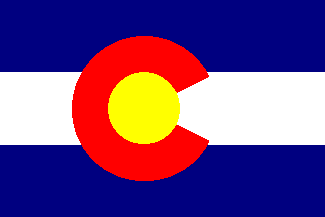|
|
Central Colorado 2003 |
After having lunch in Leadville, Brian and I continued our journey to Aspen. We had backtrack along US-24 to Colorado Highway 82, which headed west towards Independence Pass. The first town was Twin Lakes, aptly named because it sits between two lakes. Founded in the early 1860s as Dayton by settlers from Ohio, the town is located in the San Isabel National Forest. By 1869, the camp faded as miners moved away and the town disappeared from the map. In the 1870s, the town was renamed Twin Lakes and began to develop as a mountain tourist resort.
Now the town is a sedate stop between Leadville and Aspen. We stopped in Twin Lakes to use the facility. Brian struck up a conversation with the girl that was working at the information booth, and she provided a booklet that contains much of the information included here.
We continued west northwest on CO-82, which leaves the plateaus of Leadville and continues into the mountains south of Aspen. To the north, we could see Mount Elbert, which, at an elevation of 14,433 feet, is Colorado's tallest peak. We pulled over at a rest stop to take pictures of the scenery. Fortunately, there was someone to take our picture, which is the only one of us together on this two-day driving trip.
|
|
|
| We've climbed the mountain | Such beautiful mountains |
CO-82 climbs the Sawatch Range as it heads towards Independence Pass. It is a narrow, two-lane road, on which the top posted speed is 35 miles per hour. Drivers are hard-pressed to reach, or exceed, this limit. It is a beautiful ride, and we stopped a couple of times to take pictures.
|
|
|
| I mastered the road! | I actually did all of the driving! |
|
|
|
| That's a narrow road. | A higher view of the valley from which we came |
The road ascends to Independence Pass, which, at an elevation of 12,095 feet, is one of the highest road passes in North America. Originally, it was named Huntington Pass. Gold was discovered in the area on 04 July 1879, after which the pass was known by its current moniker. A road through pass has been in operation since 1882, when it was opened as a toll route between Twin Lakes and Aspen. The road still links the town towns, but now is a freeway. We stopped to take in the sights.
|
|
|
| Brian guards the Independence Pass sign | A foreboding sign |
From Independence Pass, it's about a 20-mile drive to Aspen, which also includes a 2200-foot change in elevation. The road is narrow, sometimes one lane with blind curves. It is posted that no vehicle longer than 35 feet is allowed on the road, but we saw a number of camper vans coming from the other direction. As we descended, the aspen trees became much more prevalent, with their rich green leaves.
These aspen trees give the town of Aspen its name and its beautiful surroundings. It's much different than many of the other ski towns that I've seen. Aspen was founded in 1879 by Midwesterner Henry Gillespie as Ute City, and soon became a center of the silver mining industry. In 1880, Clark Wheeler renamed the town Aspen, after skiing into the valley on "Norwegian snowshoes". By 1887, the town was served by two railway lines, which carried away the silver ore that had been removed from the mines at the base of Aspen and Smuggler Mountains. The population had swelled to 15,000 people, making it the third largest city in the state of Colorado. Like Leadville, Aspen fell into decline in 1893, as England stopped minting silver coins, thus causing the United States government to devalue the precious metal.
In the first half of the 20th c. CE, Aspen's population dwindled to a mere two hundred residents. In 1936, three men (Tom Flynn, Ted Ryan and Billy Fiske) built the Highland Bavarian Lodge, which attracted skiers to the town. During World War II, the US Army's 10th Mountain Division trained in Leadville, but used Aspen's slopes for ski practice. The town hosted the US National skiing championships in 1941 and its first skiing world championships nine years later. These events solidified Aspen's place among the top ski resorts in the world. The town is home to many celebrities, who add to the mystic of the town. Every February, Aspen also hosted the Gay Ski Week.
In 1949, Elizabeth Paepcke, the wife of a Chicago industrialist, was instrumental in bringing the Goethe Bicentennial to Aspen, which started the town's love affair with cultural events. Now the town hosts the Aspen Music Festival, the Aspen Institute for Humanistic Studies and the International Design Conference at Aspen. The Music Festival spawned the internationally-renowned Aspen Music School.
After driving through Aspen, Brian and I proceeded to our hotel, which was located in neighboring Snowmass Village; it was far cheaper to stay in there than in Aspen. After getting settled in the hotel room, which included a short nap, we headed back into Aspen for sightseeing and dinner.
Unfortunately, we did not take that many pictures of the town. While Aspen is set in a beautiful location, most of its shops are national chains that one could fine in the local mall - The Gap, Banana Republic and the like. We had dinner at the Ute City Saloon, which was located at the corner of Spring and Cooper Streets.
|
|
|
| An interesting building in downtown Aspen | The Wheeler Opera House, built by industrialist Jerome Wheeler and opened in 1889 |
|
|
|
| Downtown Aspen, with ski slopes in the background. 0% of Aspen's ski slopes are rated beginner. | Aspen's City Hall |
Proceed to Day Four or
return to Main Colorado Page
